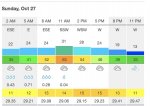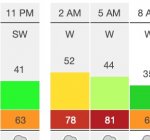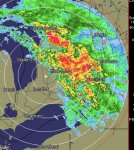You are using an out of date browser. It may not display this or other websites correctly.
You should upgrade or use an alternative browser.
You should upgrade or use an alternative browser.
Weather
- Thread starter Wingboy
- Start date
This morning was 5 but sunny so I decided to ride to work. Old School Rd and Healey have some beautifully repaved sections, including that horrible downhill/uphill corkscrew that looked like it had been hit by mortar rounds. Beautiful ride, I'm pretty sure the winter will destroy it so catch a ride out that way if you get a chance before then.
AllistonGT
Well-known member
Heading to Muskoka tomorrow. 19 Degrees and sunny. Perfect!
AllistonGT
Well-known member
Did Southwood road today. Both directions. Colors are 100%. Parts of the road are not so good. Overall ok. Was like riding through a tunnel of yellow leaves.  Temp hit 22 at one point.
Temp hit 22 at one point.
Sent from my iPhone using Tapatalk
 Temp hit 22 at one point.
Temp hit 22 at one point. Sent from my iPhone using Tapatalk
Iceman
Well-known member
Wow! What an amazing spot.


Sent from my SM-A530W using Tapatalk
Looking good tomorrow afternoon - I'll take 14 with sun . 

 www.windfinder.com
www.windfinder.com

Windfinder.com - Wind & weather forecast Mississauga
Windfinder.com - Detailed wind & weather forecast for Mississauga / Ontario, Canada for kitesurfing, windsurfing, sailing, fishing & hiking.
Trials
Well-known member
Rode this morning until I couldn't feel my clutch finger any more ?
there is a thin layer of ice under some of the leaves and pine needles that makes traction very interesting and some places that are total ice but otherwise, we haven't been ?dumped on yet, guess I better go for another putt.
there is a thin layer of ice under some of the leaves and pine needles that makes traction very interesting and some places that are total ice but otherwise, we haven't been ?dumped on yet, guess I better go for another putt.
Meteor shower
It's that time of year again and we might just have a clear sky tonight in S Ontario. Might take a staff up to the flying field.
Partner in Australia always gets up early so moon is down at 4 am there. Peak is tomorrow but it's clearer tonight and apparently the stream is rich in fireballs....I can attest to that in other years.
It's that time of year again and we might just have a clear sky tonight in S Ontario. Might take a staff up to the flying field.
Partner in Australia always gets up early so moon is down at 4 am there. Peak is tomorrow but it's clearer tonight and apparently the stream is rich in fireballs....I can attest to that in other years.
The Moon is full," reports Taichi Nakamura, who photographed the luminous orb rising above Miyazaki, Japan, on Dec. 12th.
Lunar glare is nearly overwhelming the Geminids, making it impossible to see a majority of the shower's faint meteors. Forecasters expect the shower to peak on Dec. 13-14. In a moonless year, sky watchers could expect to see dozens of meteors per hour flying from the constellation Gemini high in the midnight sky. This year, rates will be reduced 5-fold or more.
Now for the good news: The shower is relatively rich in fireballs. Debris from 3200 Phaethon is dense and gravelly, less fragile than the comet dust of typical meteor showers. This gives the Geminids a boost in luminosity, allowing the brightest to be seen even under full Moon conditions.
If you would like to try to catch a Geminid fireball, go outside around midnight on Dec. 13-14 and watch the sky for an hour or so. Worst-case sceneario: You'll get a great view of the Moon.


























